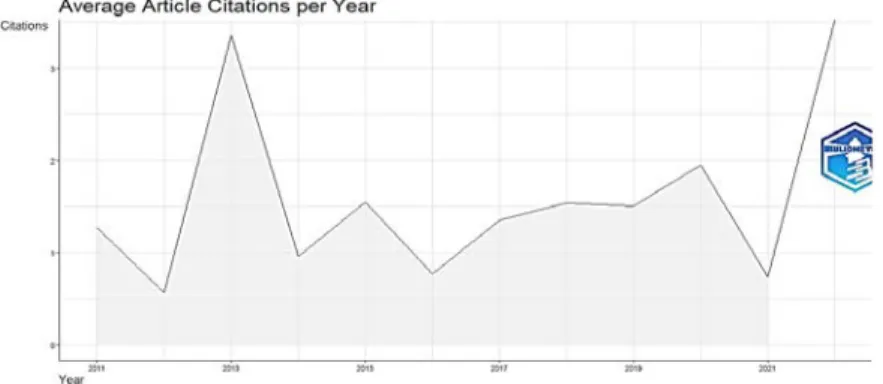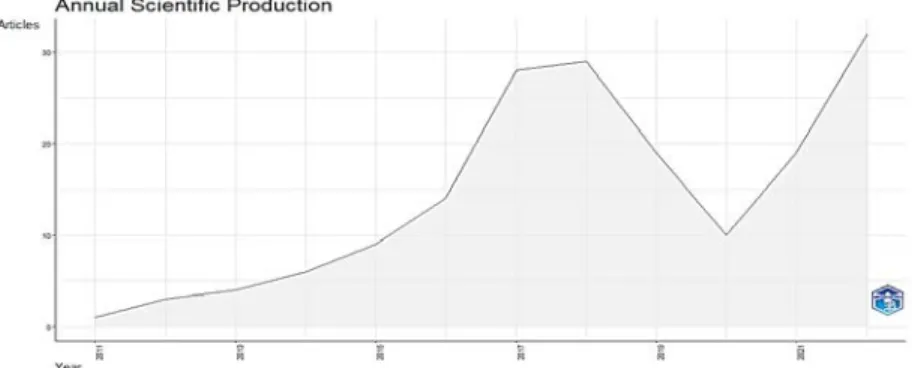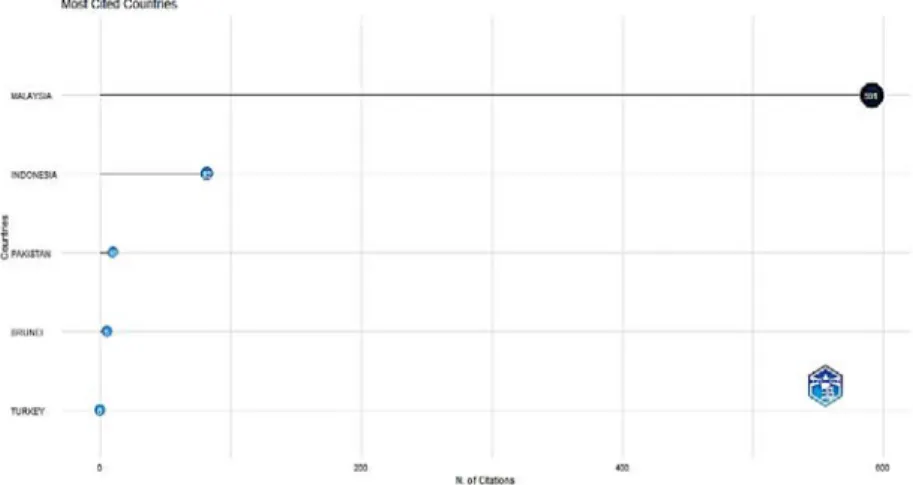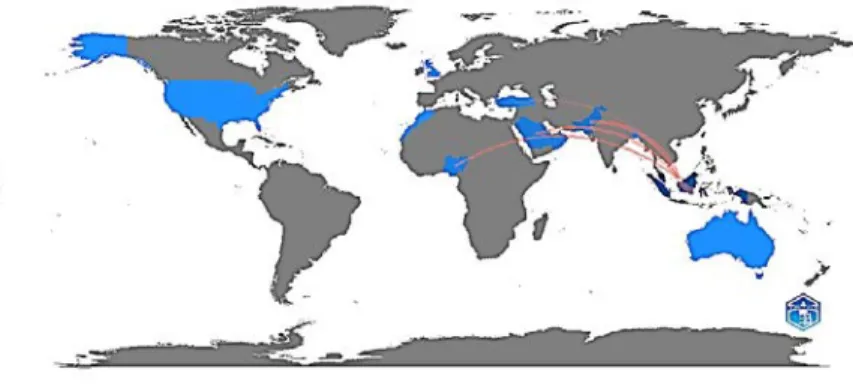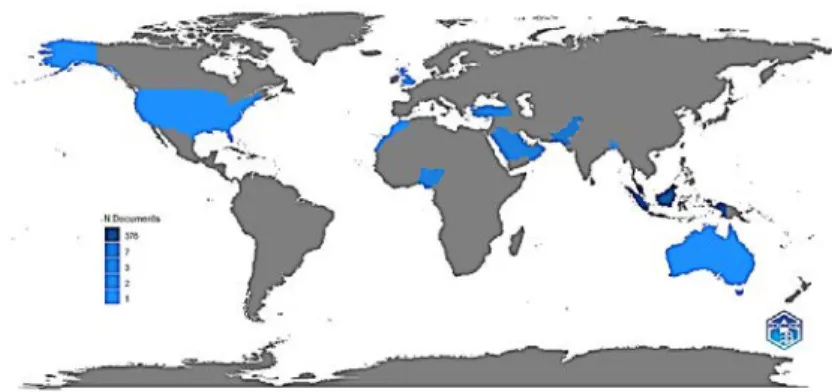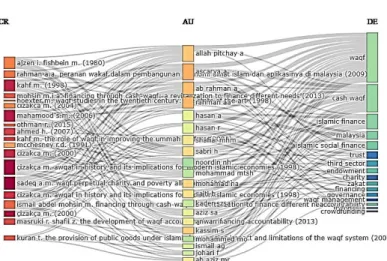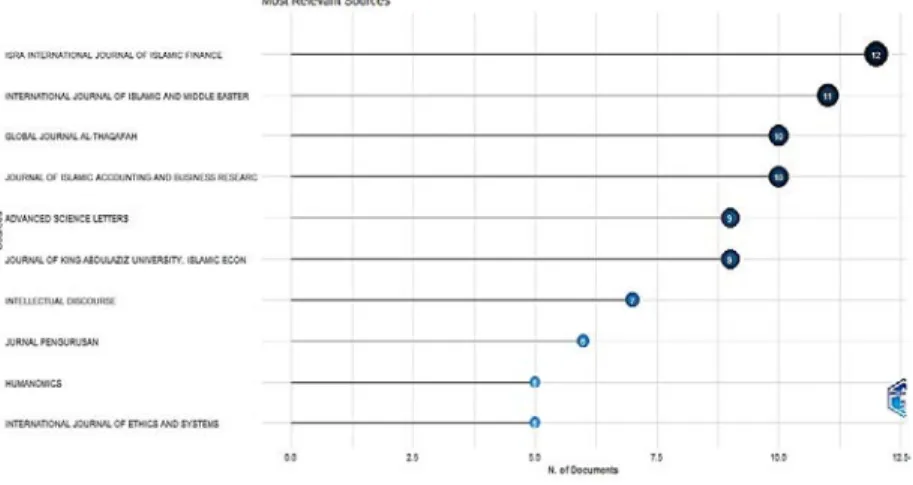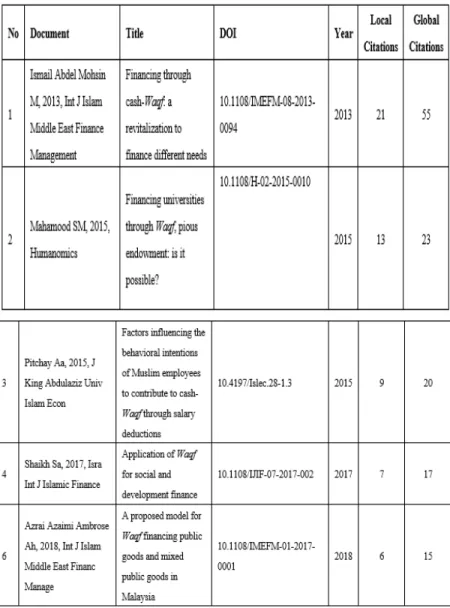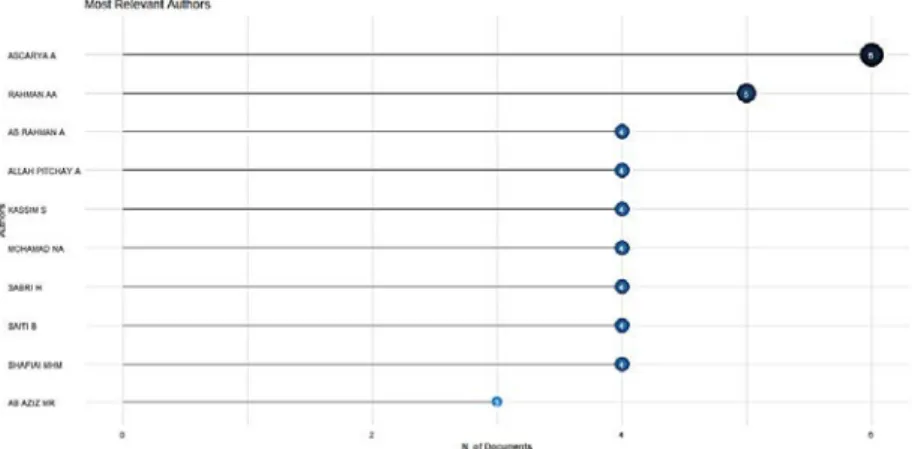The objectives of this study are to assess the latest achievements in empirical Waqf research and to analyze the current development in the Waqf industry in Malaysia and Indonesia. This is one of the important elements in the field of Islamic social finance and this study aims to analyze the rapid and aggressive growth of Waqf literature, particularly in the context of ASEAN emerging economies. Meanwhile, Indonesia's Badan Wakaf Indonesia (BWI) statistics also found a similar pattern to Malaysia in the context of Waqf country.
Furthermore, in Indonesia, some of the Waqf assets are managed by the private sector such as Dompet Dhuafa. Both countries engaged aggressively in endowment money to increase and sustain fundraising. Previously, many studies in the field of Waqf focused on poverty alleviation, education, social finance, innovative finance and other areas (Çizakça, 1995; Çizakça, 1998; Mohsin, 2013; Saiti et al., 2019).
First, this study contributes to the body of knowledge as a thorough bibliometric analysis was conducted in this study, which revealed a comprehensive analysis of Waqf research in Malaysia and Indonesia. Secondly, this study is expected to help the regulators of both countries to understand the current practices of Waqf. Readers interested in learning more about other aspects of Waqf research should refer to the works of Che Azmi and Hanifa (2015), Abdullah (2019), Sulaiman and Alhaji Zakari (2015), Subekti et al.
Considering the limited publications in the field of Waqf, the analysis period is from 2011 to 2022.
Results and Discussion
On the other hand, regarding citations, the number of citations encountering head and shoulders patterns throughout 2011-2015, then increased steadily from 2015 onwards except for 2020 to 2021 given the pandemic period. From 2021 onwards, citations again showed an increasing pattern in both countries, indicating that researchers. interest in the fields of social finance, especially in the context of Waqf, has been growing. It is clear that Malaysia and Indonesia are the dominant countries in terms of citations in waqf literature.
From 2011 to 2022, the number of entries for Malaysia and Indonesia was 591 and 82 respectively, followed by Pakistan, Brunei and Turkey. Regarding the international collaboration of authors with Malaysia and Indonesia, Figure 4 shows that most of the contributors in the. field of Waqf field come from Bangladesh, Pakistan, Turkey, Nigeria and Saudi Arabia. There is a wide coverage of Waqf research that is thoroughly explored worldwide in various contexts and applications.
According to Uluyol et al. 2021), the Waqf concept has been applied in various contexts ranging from historical perspectives, sustainable development goals, philanthropic goals as well as regulatory issues not only in Malaysia and Indonesia but worldwide (Ahmad and Ab Rahman, 2011; Mandaville, 1979; This clearly shows that these two countries are prominent and advanced in terms of Waqf research. From the sample of keywords and the sources using the 174 documents, it is clear that CR is dominated by the study conducted by Ajzen and Fishbein (1980 ), and this paper has become the top reference for the theoretical model known as the Theory of Reasoned Action.
For the second part, AJJ, it is shown that the three main contributors to Waqf research are: Allah Pitchay et al, followed by Ascarya et al, and Abdul Rahman et al. The largest number of publications occurred in Humanomics with a total of 79 publications, followed by the International Journal of Middle Eastern and Finance with 77 publications. The majority of publications were concentrated in the top five journals as shown in Table 2.
Researchers study different dimensions of Waqf applications with the participation of different countries, as shown in Figure 4 and Figure 5. The H-index considers both the number of citations and the number of citations of a researcher's work. For Total Citations (TC), Figure 10 shows the top 20 researchers in terms of Waqf citations.
At the same time, cash waqf is also part of the main research of Waqf, as depicted in the figure. Additionally, Figure 13 presents the results for trending topics for Waqf research in both countries.
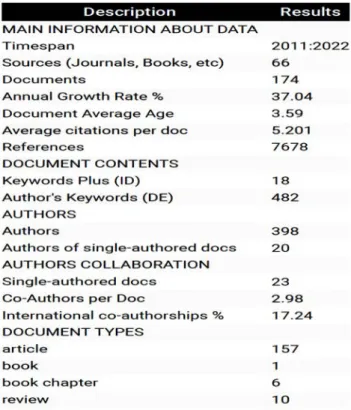
Conclusion
The results showed that Waqf development has evolved dramatically in both countries with proper government support and financial aid. Step-by-step improvements are being made to serve the real purpose of Waqf for the development of the ummah in both countries. Usury : the cash waqf controversy in the Ottoman Empire, International Journal of Middle East Studies.
A dynamic model for cash waqf management as one of the alternative instruments for poverty alleviation in Indonesia. In The 23rd International Conference of The System Dynamics Society Massachusets Institute of Technology (MIT) (p. Financing through monetary waqf: revitalization to finance diverse needs, International Journal of Islamic and Middle East Finance and Management. 2018), Factors influencing the adoption of the crowdfunding-waqf model (CWM) in the development of waqf lands, Journal of Islamic Marketing, 9(3), pp.
Behavioral Intention of Micro-Enterprises to Use Integrated Waqf Micro-Enterprise Investment Model (ICWME-I) as a Source of Funding. Factors influencing Muslim employees' behavioral intentions to contribute to cash waqf through salary deductions. Perceived ihsan, Islamic equity and Islamic religiosity towards charitable cash waqf giving, Journal of Islamic Marketing, Vol.
The role of share waqf in the socio-economic development of the Muslim community: the Malaysian experience. Financial Sustainability of State Waqf Institutions (SWIs) in Malaysia, Journal of Islamic Accounting and Business Research. Modeling the behavioral intent of crowdfunders to adopt the crowdfunding waqf model (CWM) in Malaysia: The technology adoption model theory.
Development of a cash waqf model as an alternative source of finance for micro-enterprises in Malaysia. Exploring the behavioral intention to participate in a Cash Waqf-Financial Cooperative- Musharakah Mutanaqisah housing finance model. An Exploratory Study of Musharakah SRI Sukuk for Waqf Property/Asset Development in Malaysia.
